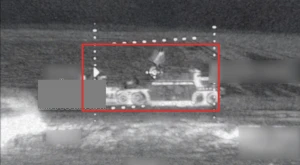
More expensive and easier to detect: military expert Kovalenko on advantages and disadvantages of Shahed-238
Although so far there has been no official denial or confirmation, Ukraine's information space is full of reports about the shooting down of an Iranian Shahed-238 with a jet engine. Military and political observer Oleksandr Kovalenko analyzes the characteristics of the weapon
The joint project of OBOZU.A and the Information Resistance group reveals more about the new kamikaze drone.
According to Oleksandr Kovalenko, military and political columnist, the Shahed-238 kamikaze drone is a further development of the Shahed-131 and Shahed-136 series. "Moreover, this progress accelerated as Russia became interested in the weapon and introduced many technological changes to it," he writes.
The Shahed-238, unveiled on November 23 and available in three different versions:
- The simplest version lacks a guidance system, relying on predefined coordinates for targeting
- A version equipped with an electro-optical guidance system
- A modification featuring a radar-guided system
Black color and jet engine
The Iranian kamikaze drone was introduced in a distinctive black color, suggesting Tehran's efforts to make its drones less conspicuous during nighttime attacks. Shortly thereafter, Russia also began launching black-colored Shahed-136 drones against Ukraine. However, given the results of their destruction in the airspace of Ukraine, the color change was not very effective.
Regarding the jet engine, it's challenging to determine its actual power and speed metrics. While they may exceed the Shahed-136's figures by 2-3 times, potentially reaching around 500 km/h, several crucial points need clarification for a comprehensive understanding.
Any aerial vehicle, missile, or UAV possesses both maximum and cruising speed parameters. For instance, the Shahed-136 has a maximum speed of 180 km/h, but it typically operates at a cruising speed of around 150 km/h for fuel efficiency, allowing it to cover the maximum distance. While the Shahed-238 boasts an enticing speed of 500 km/h, its jet engine significantly increases fuel consumption compared to the Shahed-136's more fuel-efficient design. This not only makes the Shahed-238 faster but also less fuel-efficient, resulting in a shorter flight range than its predecessor. Balancing the trade-off between speed and fuel efficiency is a challenge, especially in kamikaze drones like the Shahed, where modifications to increase fuel capacity may compromise combat capabilities.
Additionally, the jet engine of the Shahed-238 is a more heat-intensive emitter, making it easier to detect and track by air defense systems. When targeted by man-portable air-defense systems (MANPADS), the likelihood of interception significantly increases compared to the conventional Shahed-136. Equally crucial, such a product is expected to be considerably more expensive than the Shahed-136.
Challenge for air defense mobile fire groups
So, the Shahed-238, a jet-powered kamikaze drone, stands out for its versatile guidance systems and high speed, enabling better evasion of mobile interception groups. The evolution from Shahed-136, observed in Ukraine, may have prompted Iran's development of a faster drone. Nevertheless, while the Shahed-136 excels in speed, it falls short in various aspects, from limited flight range to higher costs and less explosive power. The potential use for Russians could be to breach mobile interception groups or provoke the deployment of air defense systems, potentially reducing their effectiveness.
Hence, it's not excluded that the primary purpose of deploying these drones could be the depletion of air defense resources, with other objectives taking a secondary role. "But again, I repeat: there is no official confirmation of the availability and utilization of these drones by Russia as of today," Kovalenko summarizes.
- News














































